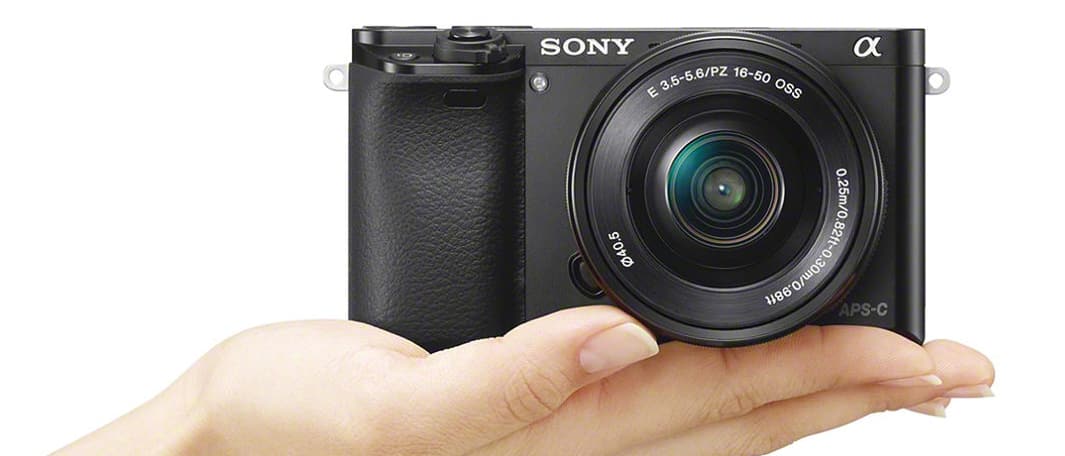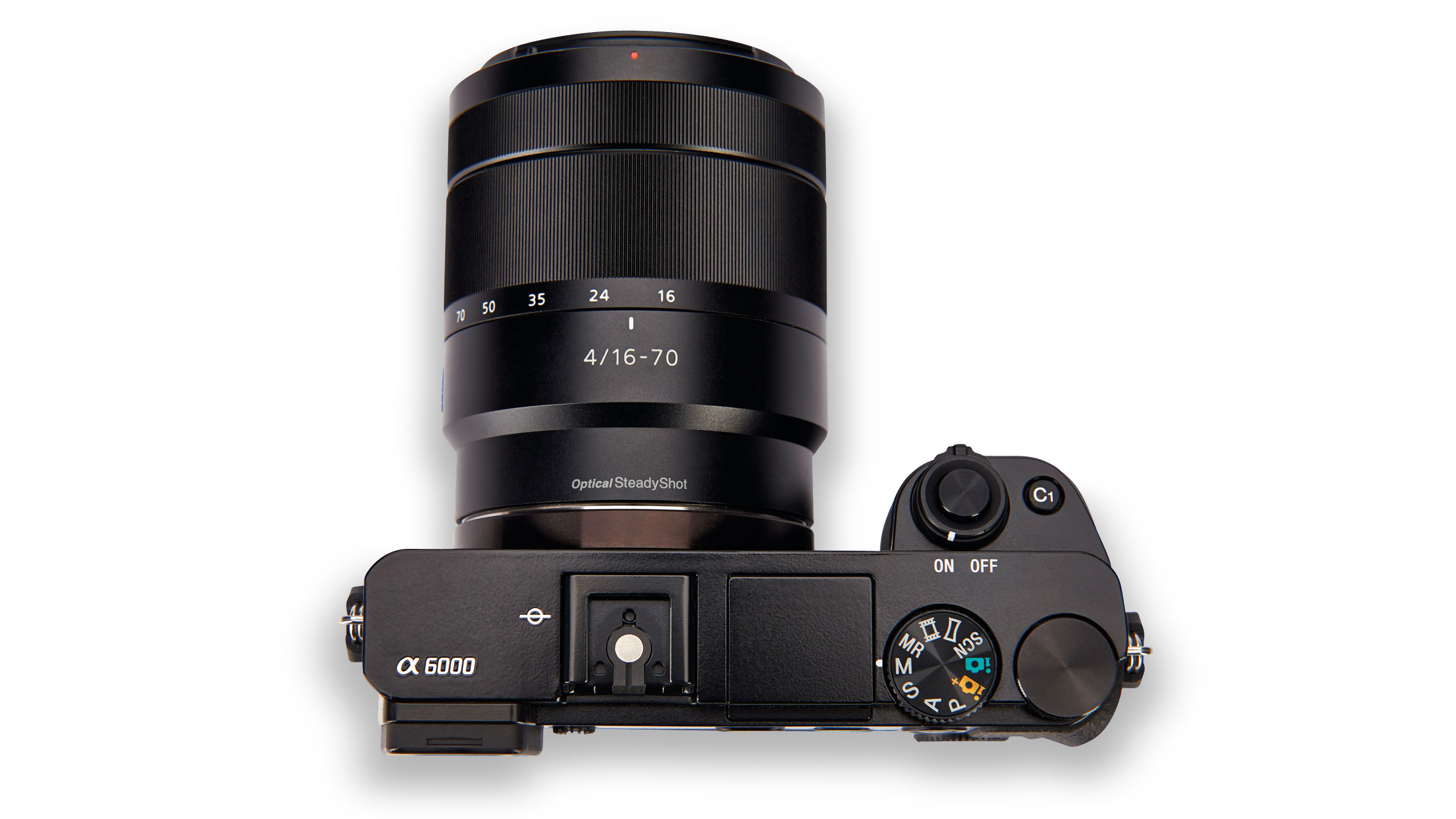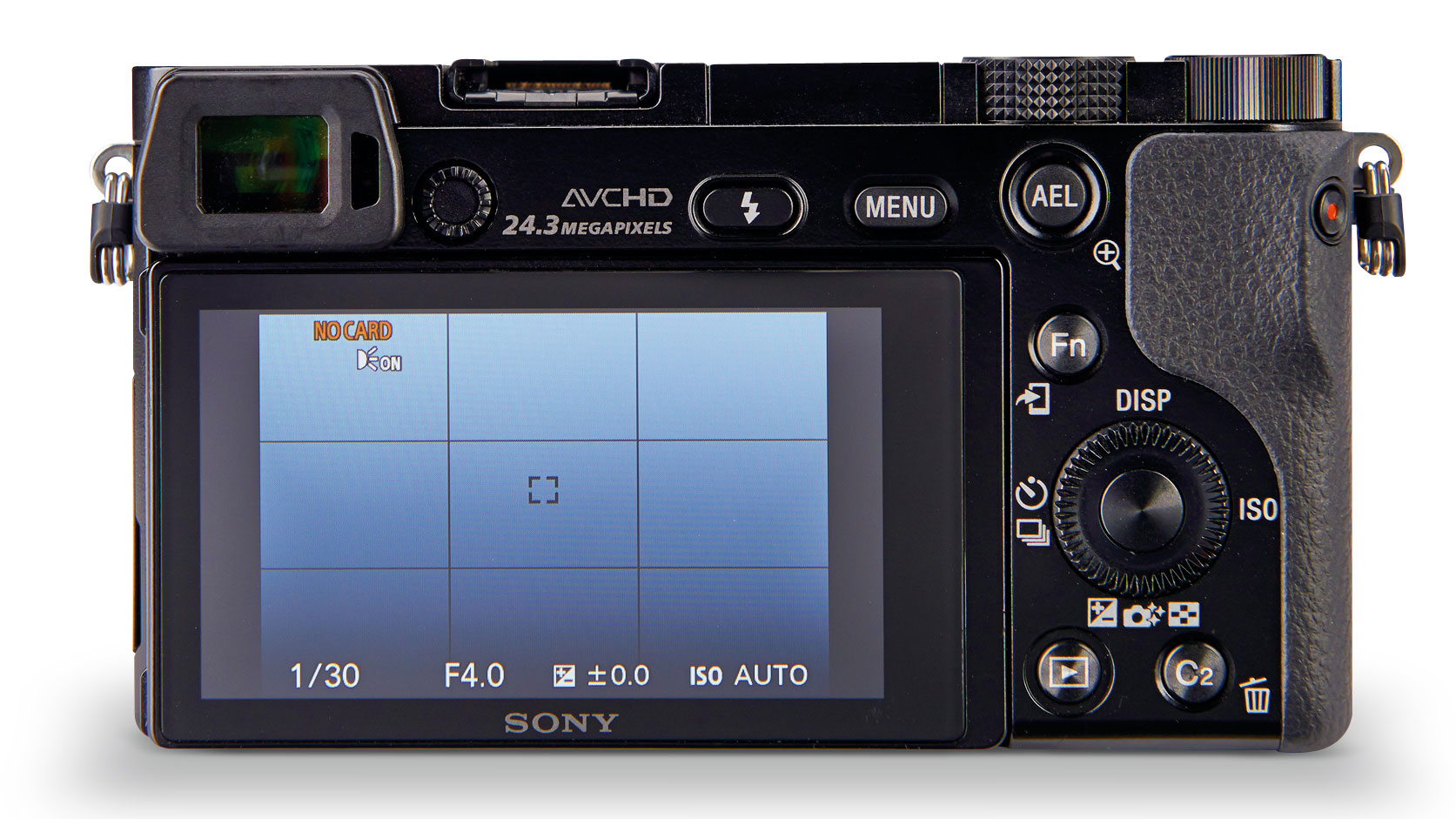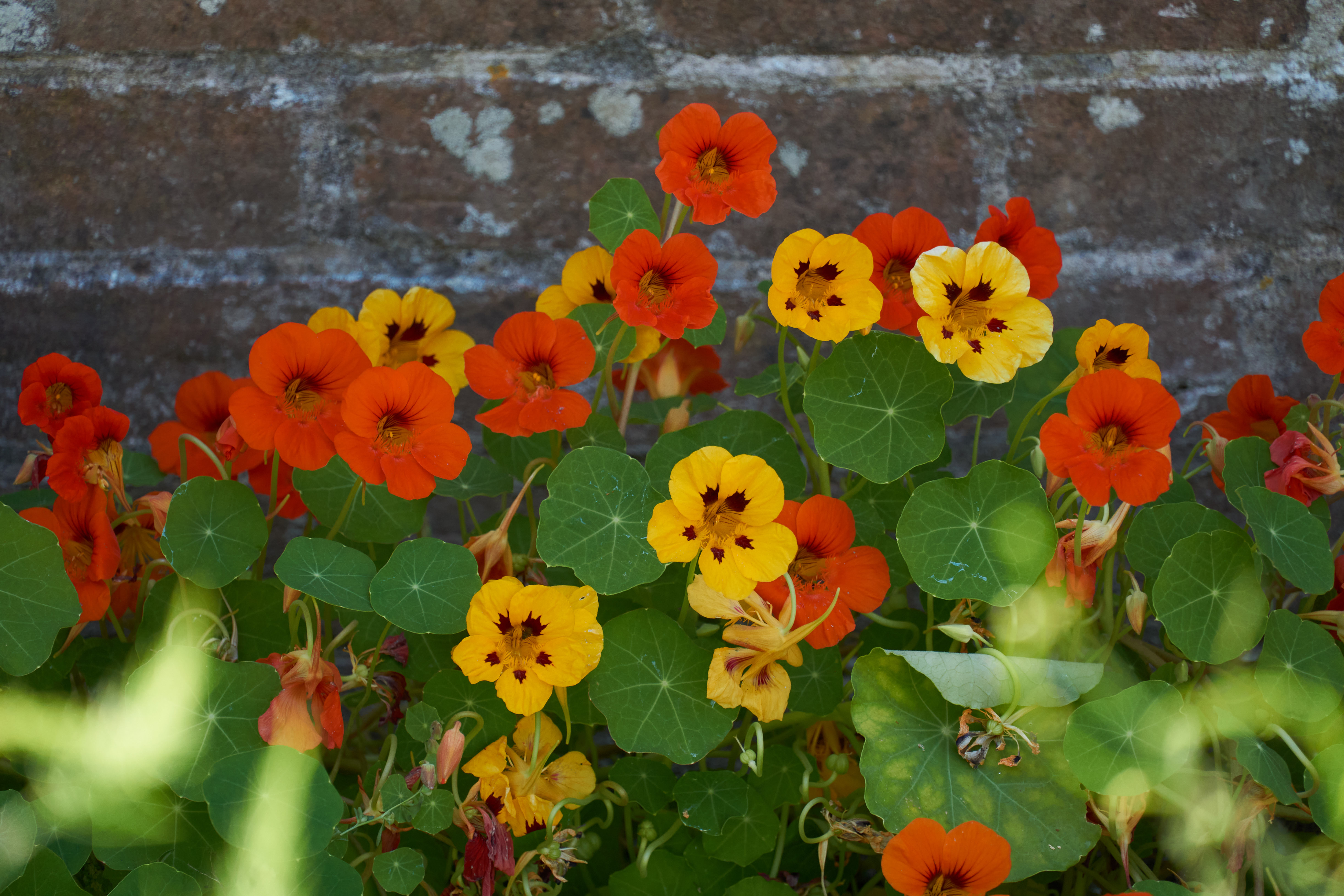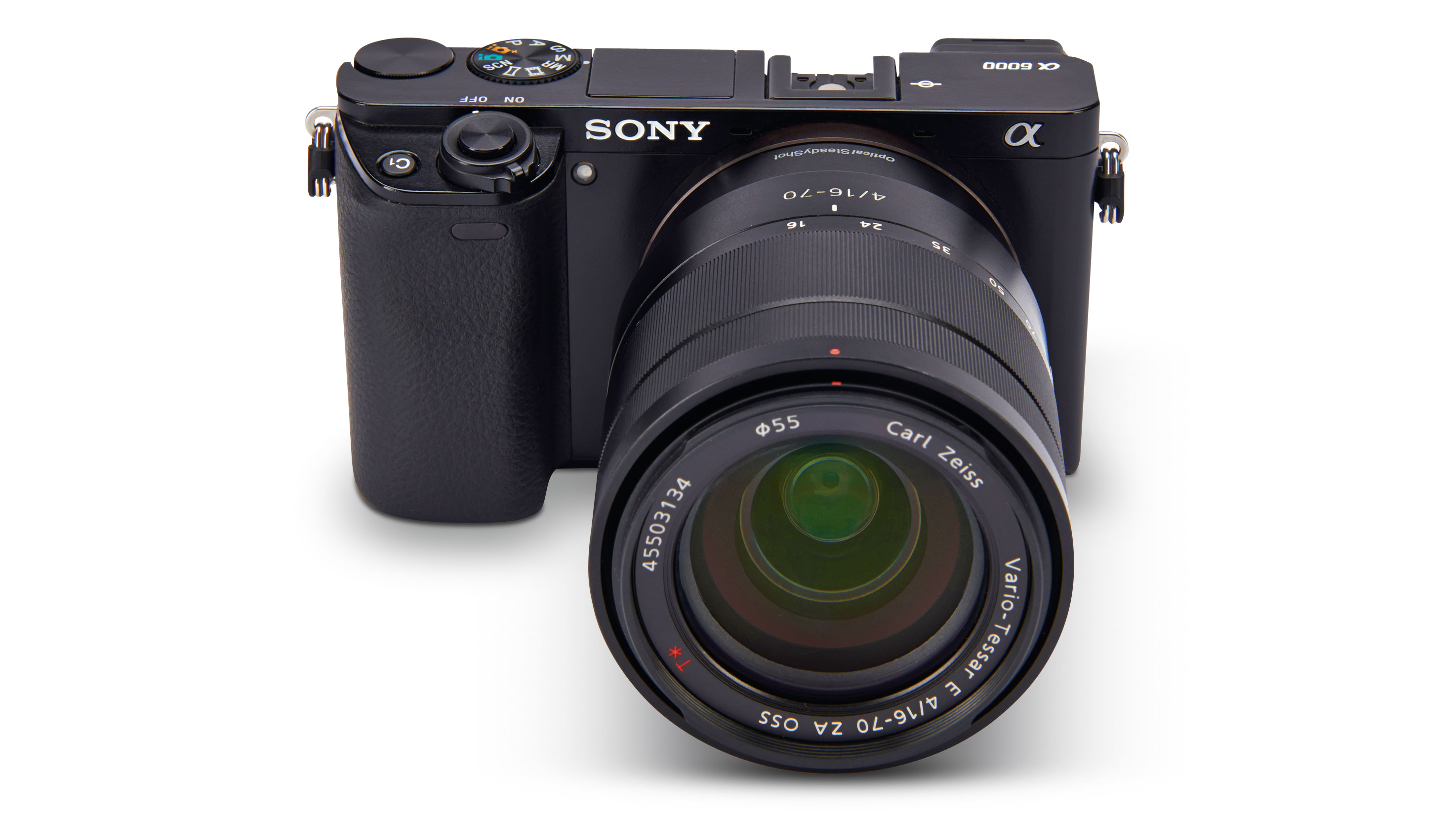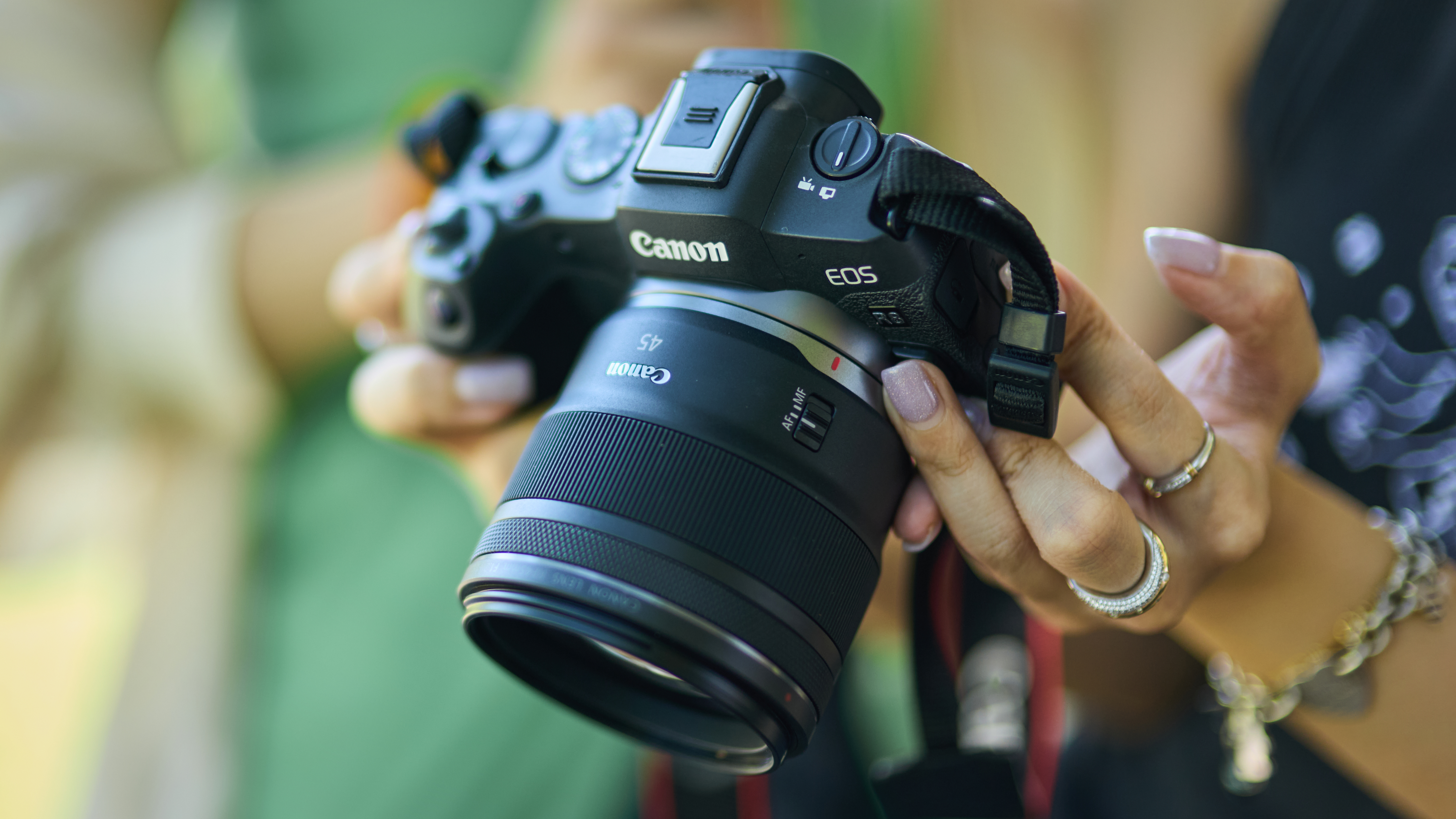Digital Camera World Verdict
Old as it is, the Sony A6000 shows that many of the most important things we look for in a camera haven’t changed. Its 24-megapixel sensor is as competitive today as it was when this camera was launched. Its 11fps burst mode is rarely bettered, even now, and while Sony has steadily improved the AF system in its later A6000-series cameras, the A6000 is already very good – perhaps as good as most of us need. You don’t get 4K video, though, and the design and displays are now looking a bit dated. Worse, the A6000, once a bargain, has been creeping up in price. It used to be old and cheap... now, it's just looking old
Pros
- +
Powerful features for stills
- +
Sharp 24MP sensor
- +
Good autofocus
- +
Built-in EVF
Cons
- -
Handling poor with larger lenses
- -
Lacks 4K video
- -
Not so good at high ISOs
Why you can trust Digital Camera World
For a long, long time the Sony A6000 has been one of our favorite beginner cameras and a real bargain buy for those who don't need 4K video. However, while the qualities of the A6000 haven't changed, its pricing has. Sony's policy has long been to keep older models on sale at steadily falling prices, and for a while this made the A6000 an irresistible budget buy. But prices now look as if they are creeping up, which means either that Sony has realized this camera is better than it thought, or it's nearing the end of its marketable lifespan.
The Sony A6000 was launched way back in 2014, which is an age ago in camera terms. Is it still competitive in today's market – especially when it has been succeeded by no fewer than five newer models in the same product line?
• Read our Sony A6000 vs A6100 vs A6300 vs A6400 vs A6500 vs A6600 article for the full comparison – it's like a dynasty, not a camera range!
The answer is a qualified yes. The Sony A6000 remains one of the best Sony cameras, as well as one of the best mirrorless cameras, thanks to its still-great performance and sheer value for money. While its specs have certainly aged, they're still plenty enough for most stills photographers.
Small and sleek, the A6000 features a 24.3MP APS-C CMOS sensor. Upon launch it competed with midrange cameras, though today its low price point makes it an option for those seeking an entry-level body. However, while we consider it one of the best cameras for beginners because of its price, it’s actually far more powerful than these.
While it lacks the 4K video and clever AF of the latest models, the Sony A6000 remains a powerful performer. Let's take a closer look at what it can do…
Specifications
Model number: ILCE-6000
Sensor: 24.3 million APS-C (23.5 x 15.6mm) CMOS sensor
Focal length conversion: 1.5x
Memory: SD/SDHC/SDXC
Viewfinder: Electronic viewfinder, 0.39 inches, 1,440,000 dots
Video: 1080p
ISO range: 100 to 25,600
Autofocus points: 179 phase detection points, 25 contrast detect points
Max burst rate: 11fps
Screen: 3-inch, 921k-dot tilting LCD
Shutter speeds: 1/4000-30sec plus Bulb
Weight: 344g (with battery and memory card)
Dimensions: 120 x 66.9 x 45.1mm
Power: NP-FW50 rechargeable lithium-ion battery
The best camera deals, reviews, product advice, and unmissable photography news, direct to your inbox!
Key features
The A6000 is equipped with a 24-megapixel APS-C sensor, which was state of the art when this camera was launched back in 2014 and only a couple of APS-C cameras improve on this even now. The image sensor has 179 phase-detection autofocus points, and there are also 25 contrast-detection points for the hybrid AF system.
At the time of launch, Sony claimed that the camera had the fastest AF in the world among cameras with an APS-C sized sensor. And while a few cameras have without doubt improved on this since then, it still feels extremely responsive, even by today’s standards.
On the back of the A6000 is a tilting LCD screen, which is joined by an electronic viewfinder: the same 0.39-inch, 1.4-million dot device found on the first edition RX10 premium bridge camera. Reflecting the broader trend, the A6000 comes complete with built-in Wi-Fi and NFC.
As its standard kit lens choice, the A6000 comes with a 16-50mm f/3.5-5.6 power zoom – a lens still bundled with modern equivalents, like the Sony ZV-E10 vlogging camera. You can also buy the A6000 body only, giving yourself the freedom to choose from the large range of different E-mount lenses now available. The Sony E 18-135mm F3.5-5.6 has a much longer zoom range and performs better than the average superzoom lens.
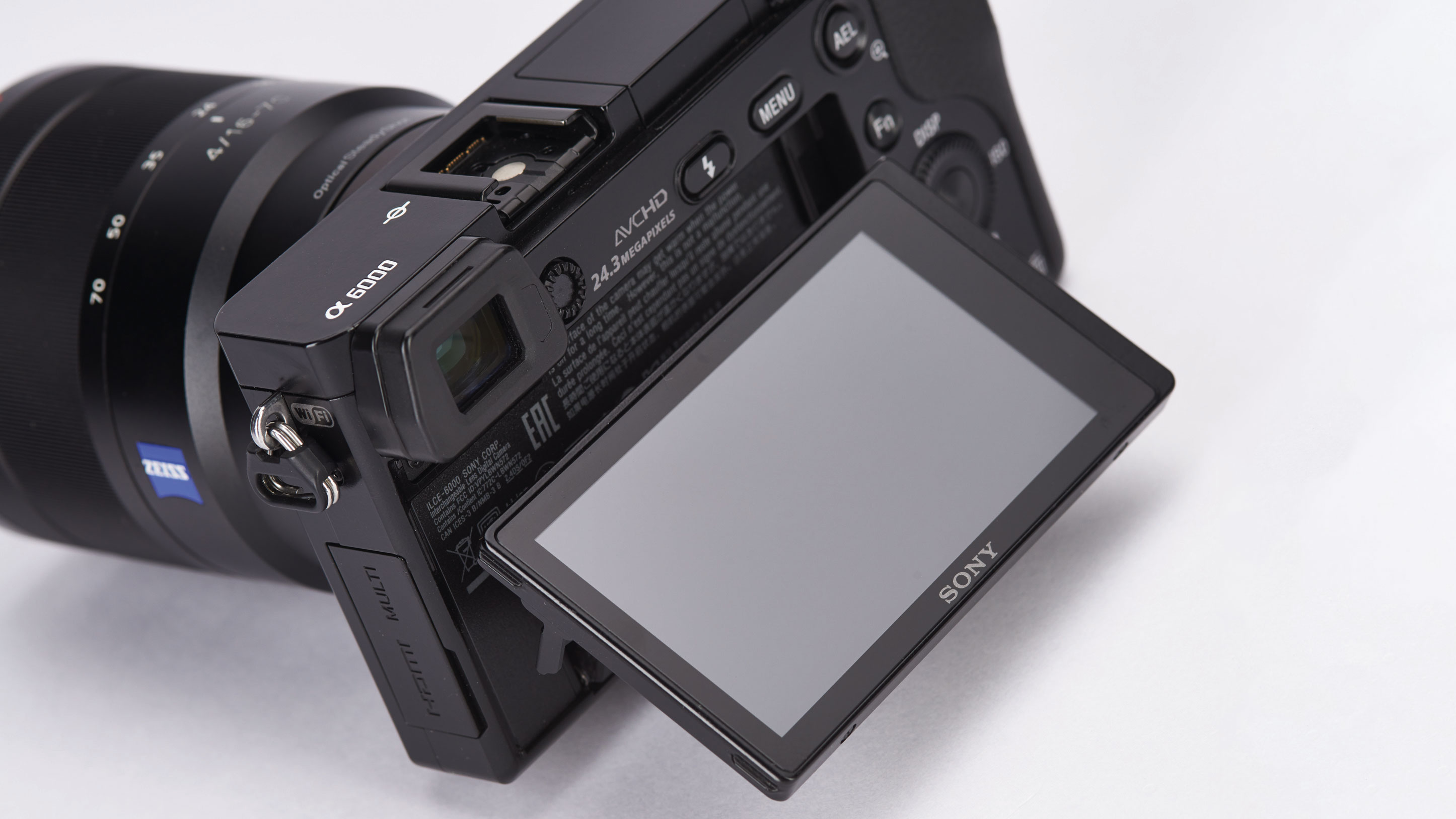
Build and handling
Those who appreciate lots of dials and buttons will enjoy the A6000. It has plenty of controls available, and, like other Sony cameras, pretty much all of them are customisable to help you adjust the camera to suit the way you take photos.
The grip of the A6000 is ever so slightly pronounced, making it quite easy to hold, though with a larger lens like the Sony 18-135mm f/3.5-5.6 it starts to feel slightly front-heavy. There’s also a nice texture covering the camera. On top of the camera are two dials: one for controlling the shooting mode (such as automatic, semi-automatic or manual), and another for altering the shutter speed or aperture, depending on the mode you’re shooting in.
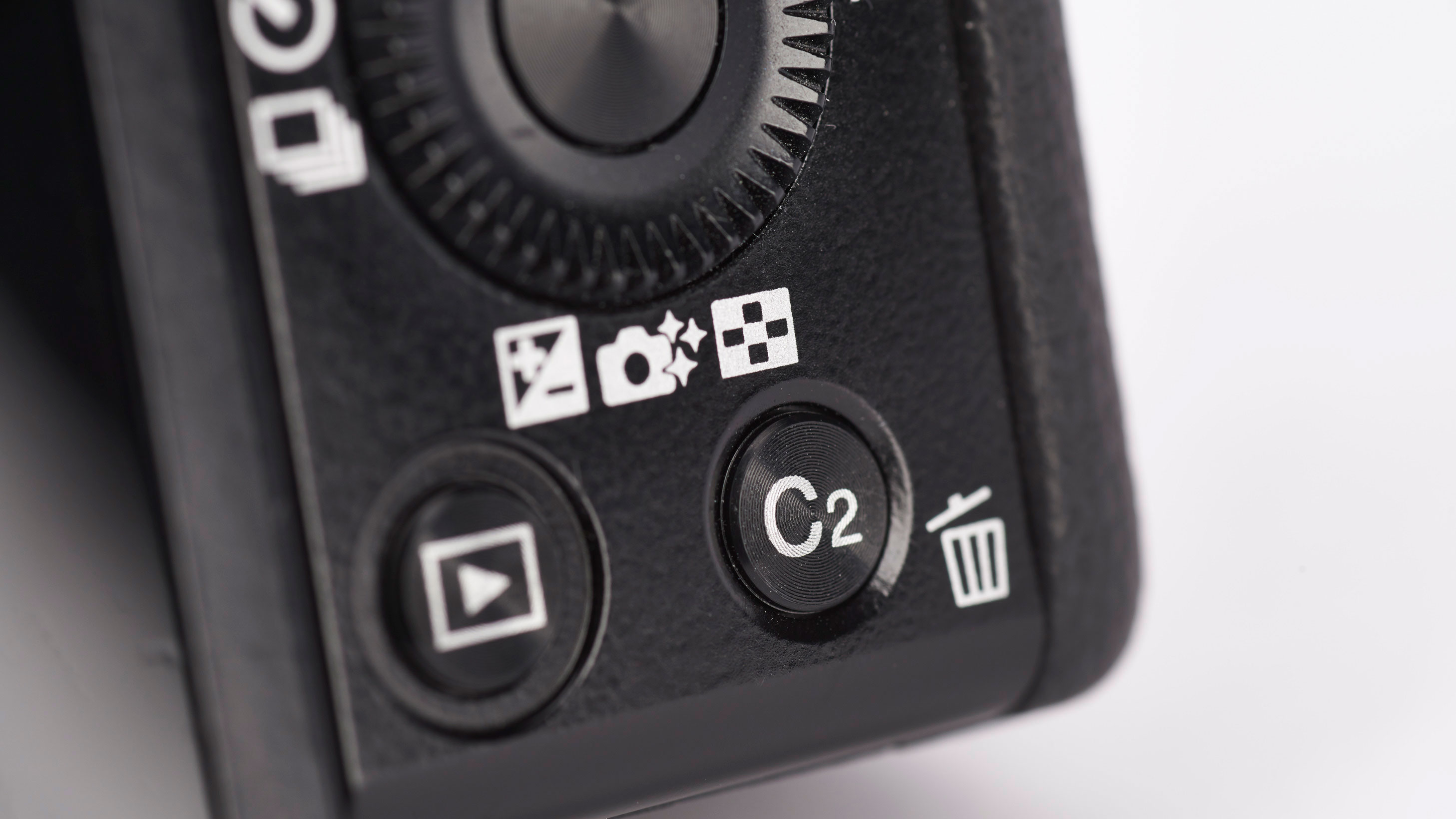
Setting the autofocus point on this camera is a task that would be speedier with a touchscreen, but it’s not too bad if you set the right custom buttons. To make things quicker, set Focus Area to Flexible Spot. From here, you simply need to press the button in the centre of the scrolling dial on the back of the camera to bring up the focus point selection option. You can then use the directional keys to move around the screen. It’s worth noting that this is the default option for the central button when Flexible Spot is selected: if you’ve got it set to anything else, it won’t work in the same way.
Although it’s not a touchscreen, the screen tilts, which is useful for shooting from some awkward angles, or for shielding the screen from glare. It’s also a ‘wide’ screen, so in the regular 3:2 aspect ratio for stills, it doesn’t use the full screen width, which makes the screen feel quite small and cramped. It's also not very scratch-resistant – ours has picked up a few scrapes and digs over the years we've had it. The viewfinder is bright and clear except in broad daylight, when it’s too easily lost in the glare.
The 1.44m-dot EVF has a low resolution by today’s standards but it does the job pretty well – and it’s especially good to get a viewfinder on an APS-C mirrorless camera at this price.
What you don’t get with this camera is a front-facing screen or 4K video (it’s restricted to full HD), but this reflects the marketplace when this camera was launched. For stills photographers, though, it’s got pretty much everything you might need, even now. Its 11fps continuous shooting speed is especially impressive.
Constantly improving video capabilities have been the main driving force behind the A6000-series cameras. If you don't need video, the A6000 isn't really so far behind the rest. The image processing may be better today, and the autofocus more sophisticated, but the design, handling and sensor itself have hardly changed.
If it's video you want, though, you'll be far better off with the new Sony ZV-E10 or the A6000's replacement, the A6100. Both are more expensive than the A6000, but the prices are getting closer and these are much more modern video shooters.
Performance
Sony has produced some of the most interesting compact system cameras currently on the market, many of them in the A6000 series that the A6000 started off. Even by current standards, the A6000 is a great performer. Its images are very sharp, with beautifully saturated colours. You can experiment with how JPEGs look straight from the camera by adjusting Creative Styles – a number of which are available as pre-stored settings.
Detail is rendered very well by the A6000. Generally, image smoothing only starts to become problematic for normal printing sizes in shots taken at around ISO 3,200 upwards. Examining images at 100% from around ISO 1,600 upwards, you will find areas of the image that have a painterly effect, but the overall effect is good. High ISO quality is one area, admittedly, where the A6000 starts to fall behind the latest cameras.
The camera’s metering system does a good job with exposure, although it sometimes struggles in high-contrast situations, when you’ll need to dial in some exposure compensation. Similarly, the automatic white balance system is a good performer, although it can be slightly confused by some artificial light sources.
In good light, autofocusing speeds are very quick, dropping as the light levels drop, but only struggling to lock on at all in very dark conditions.
The 16-50mm f/3.5-5.6 kit lens is a good all-rounder to get started with, but what you gain in compactness you lose in image quality, and if you want to see the best this camera can deliver then you’ll probably want to replace it with something better (we really rate the long-zoom Sony 18-135mm f/3.5-5.6.
Battery life isn’t bad for a mirrorless camera, but it’s still worth buying a spare battery if you travel or go on longer outings.
Lab tests
We compared the Sony A6000's lab test results with three key rivals that are also a couple of years old, but have aged similarly well. We chose the Canon EOS M50, which also has a 24-megapixel APS-C sensor and a viewfinder, as does the under-rated Fujifilm X-T100 (now replaced by the X-T200, not shown below). We also chose the Olympus OM-D E-M10 Mark II as one of the A6000's contemporaries. Now, we would probably choose the Olympus OM-D E-M10 Mark IV, a highly capable camera for both stills and video that does make the A6000 look a little tired and old now.
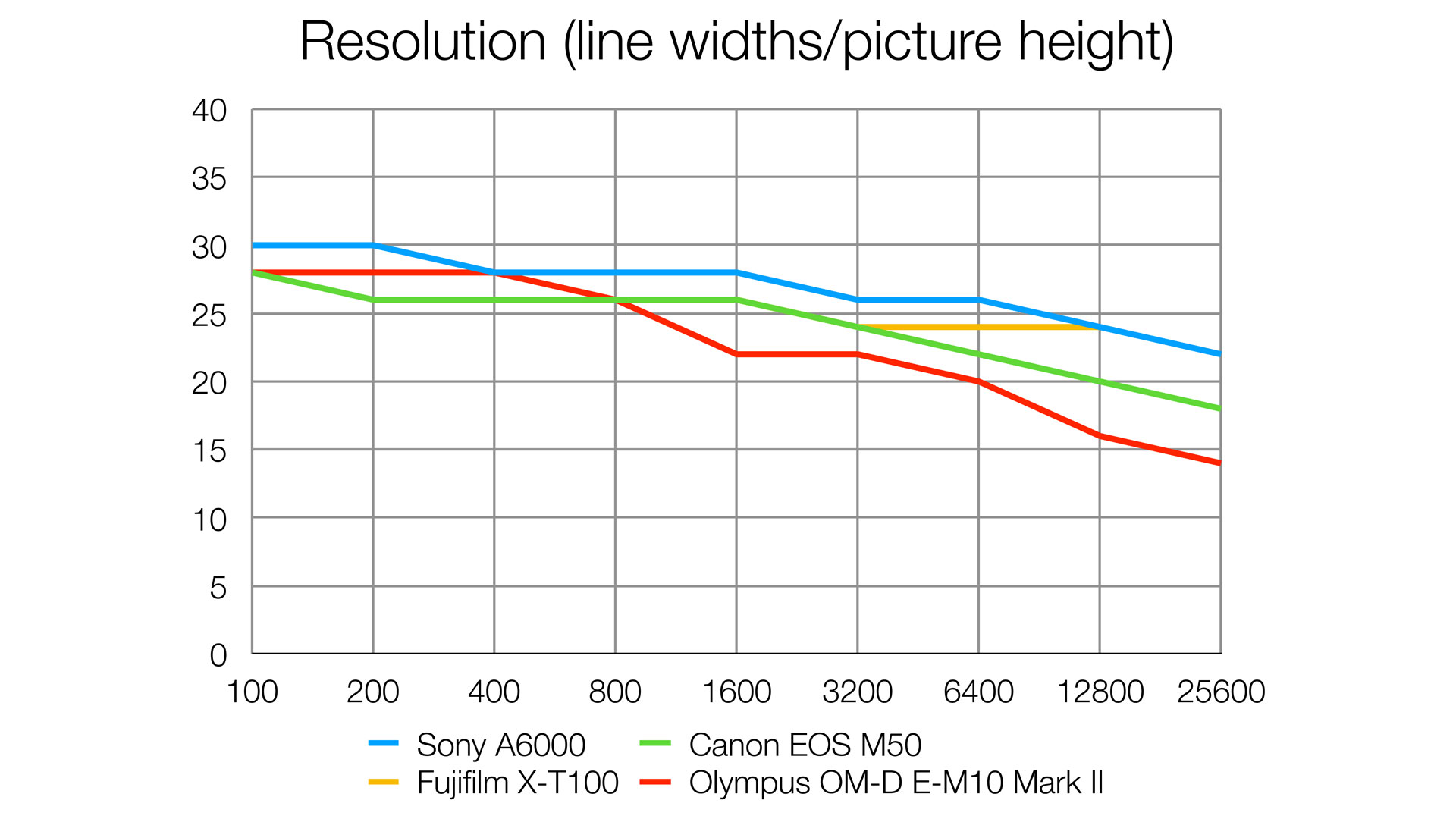
Resolution
Despite its age, the A6000 still delivers the best resolution (just) of all its closest rivals. For the record, it matches the best resolution we achieved from the 32.5MP Canon EOS 90D. The Olympus OM-D E-M10 Mark II also does well up to ISO 800, but then its resolution starts to fall away (due to its smaller sensor).
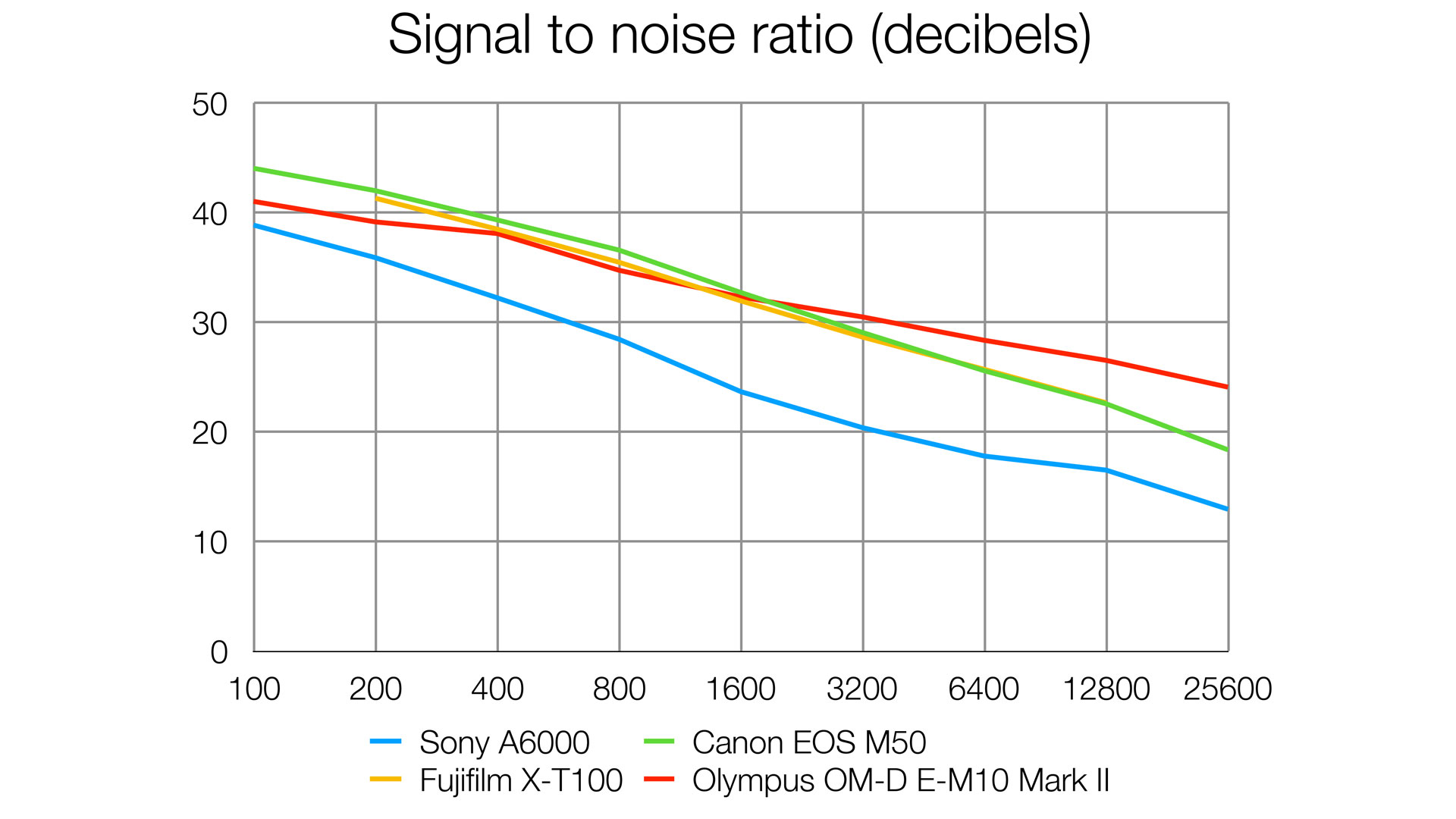
Signal to noise ratio
As we mention in the review, high ISO image noise is not the Sony A6000's strong point. Noise is not really a problem at lower ISOs, even though it scores below the others in our lab tests, but at higher ISO settings you'll need to work harder with your software's noise reduction options. The other three cameras – including the Olympus – are noticeably better in this respect.
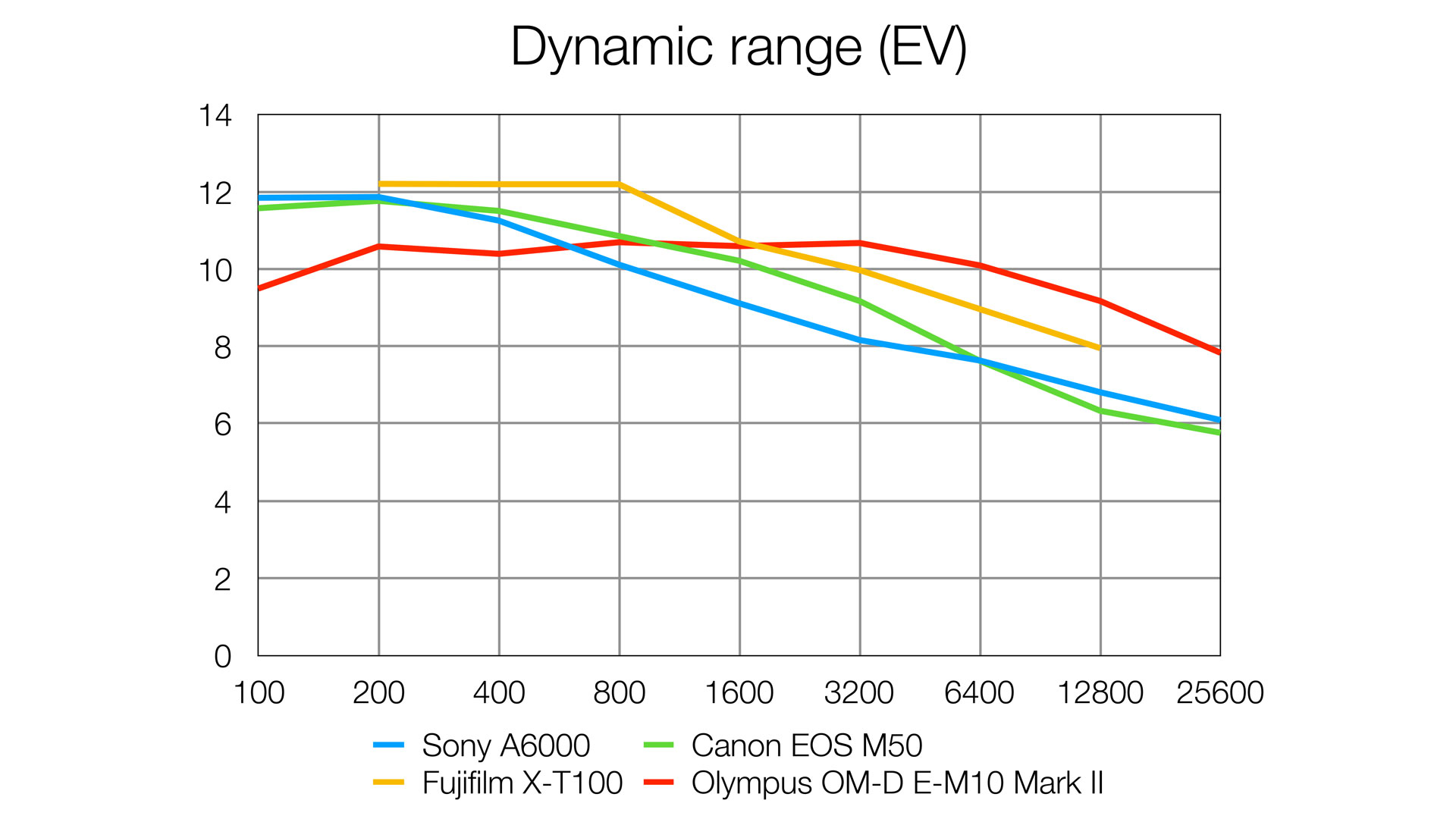
Dynamic range
The Sony keeps up well with the Fujifilm X-T100 and Canon EOS M50, though its dynamic range starts to fall away from ISO onwards. The Olympus OM-D E-M10 Mark II doesn't start off as well as the rest, but offers surprisingly good dynamic range further up the ISO scale.
Overall, we can characterise the Sony A6000 as offering very good all-round performance, especially resolution, at low ISO settings up to ISO 400-800, but at higher ISO settings its performance drops off more markedly than its rivals'.
Verdict
Can a camera launched back in 2014 and superseded by no fewer than five new models still be competitive? It’s true that the A6000’s specs now look distinctly old hat compared to what’s come along since, but only in a couple of key areas. Newer cameras have 4K video, which won’t bother you if you don’t shoot video, and more advanced AF systems – but for most of us, the A6000’s AF is plenty good enough. It was advanced for its time and still holds up now.
The key with the Sony A6000 is its price. Sony has kept it on sale year after year, and at steadily falling prices. If you want a low-cost mirrorless camera that’s way better than its price suggests it should be, get the A6000. We hope Sony carries on making it for years to come!
Read more:
These are the best cameras for beginners
We pick the best mirrorless cameras to buy today
We help you choose the best Sony camera

Rod is an independent photography journalist and editor, and a long-standing Digital Camera World contributor, having previously worked as DCW's Group Reviews editor. Before that he has been technique editor on N-Photo, Head of Testing for the photography division and Camera Channel editor on TechRadar, as well as contributing to many other publications. He has been writing about photography technique, photo editing and digital cameras since they first appeared, and before that began his career writing about film photography. He has used and reviewed practically every interchangeable lens camera launched in the past 20 years, from entry-level DSLRs to medium format cameras, together with lenses, tripods, gimbals, light meters, camera bags and more. Rod has his own camera gear blog at fotovolo.com but also writes about photo-editing applications and techniques at lifeafterphotoshop.com
